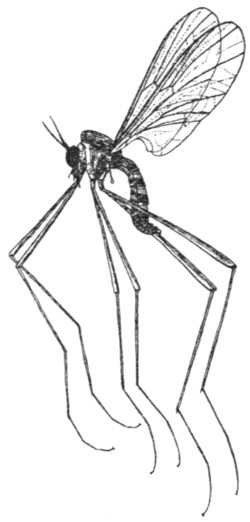This article includes a list of general references, but it lacks sufficient corresponding inline citations .(August 2025) |
| Blephariceridae Temporal range: | |
|---|---|
 | |
| Blepharicera fasciata | |
| Scientific classification | |
| Kingdom: | Animalia |
| Phylum: | Arthropoda |
| Class: | Insecta |
| Order: | Diptera |
| Infraorder: | Psychodomorpha |
| Family: | Blephariceridae Loew, 1862 |
| Subfamilies | |
The Blephariceridae, commonly known as net-winged midges, are a nematoceran family in the order Diptera. The adults resemble crane flies except with a projecting anal angle in the wings, and different head shape, absence of the V on the mesonotum, and more laterally outstretched, forward-facing legs. They are uncommon, but dozens of genera occur worldwide, and over 200 species.
Contents
One recent classification based largely on fossils treats this family as the sole member of its infraorder, but this has not gained wide acceptance.


